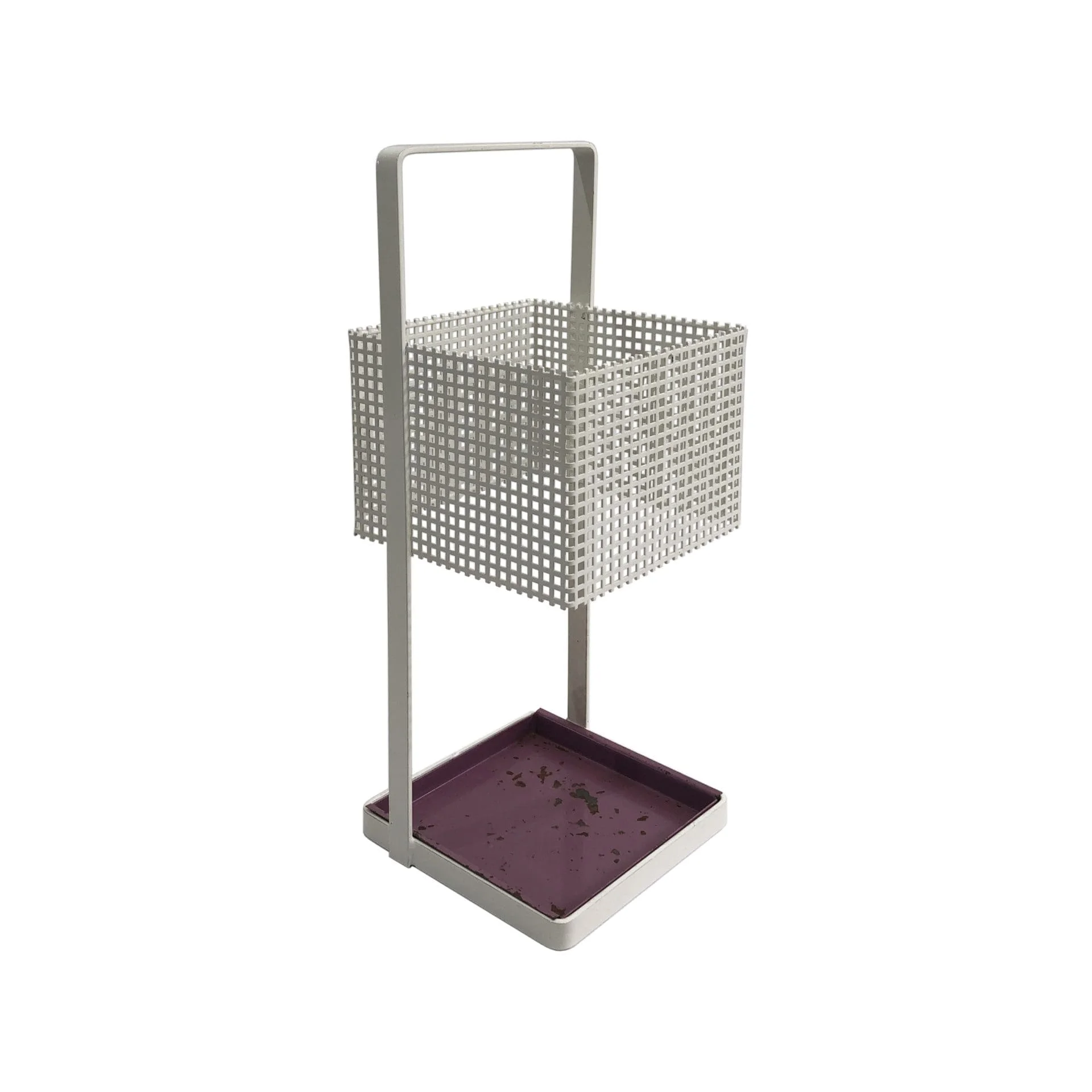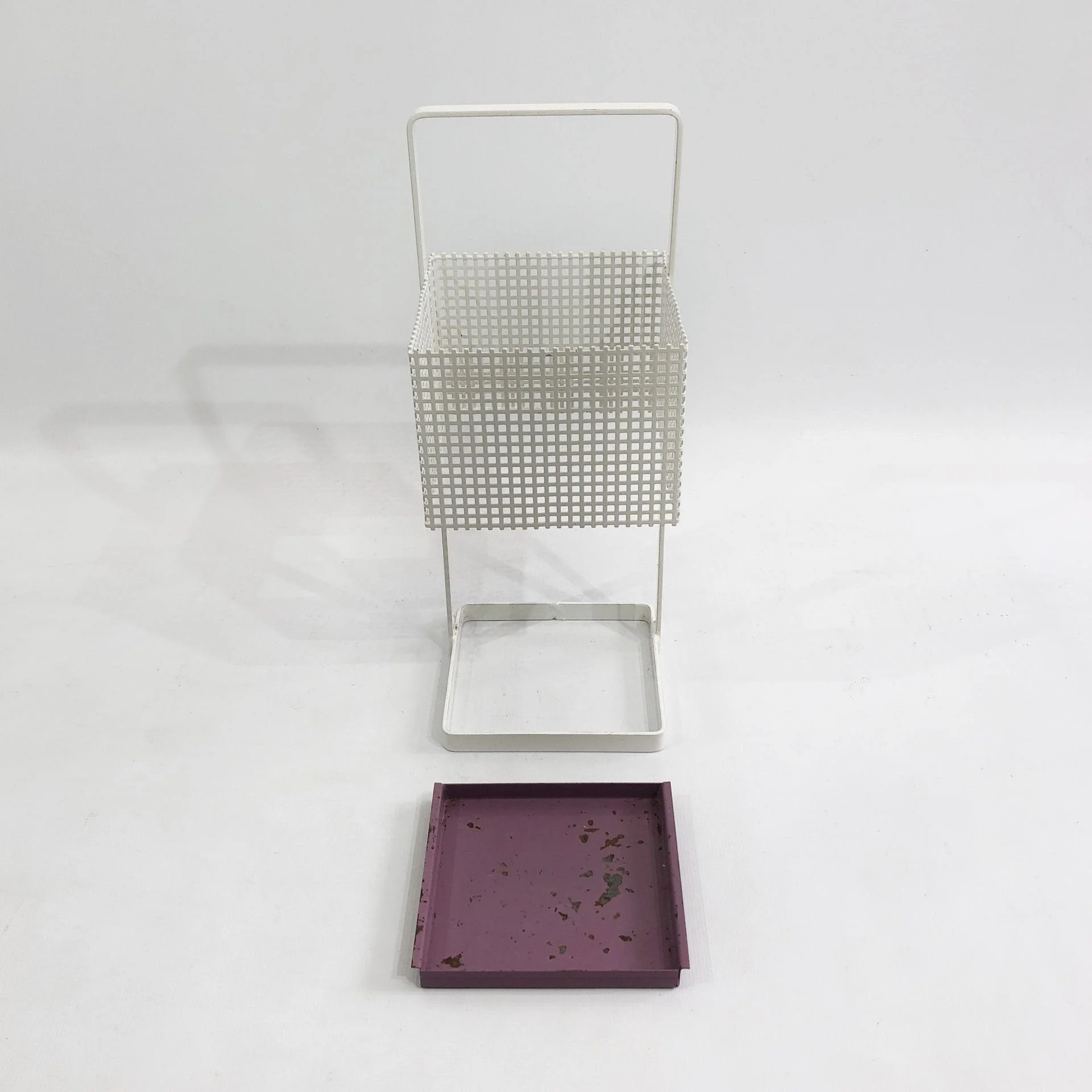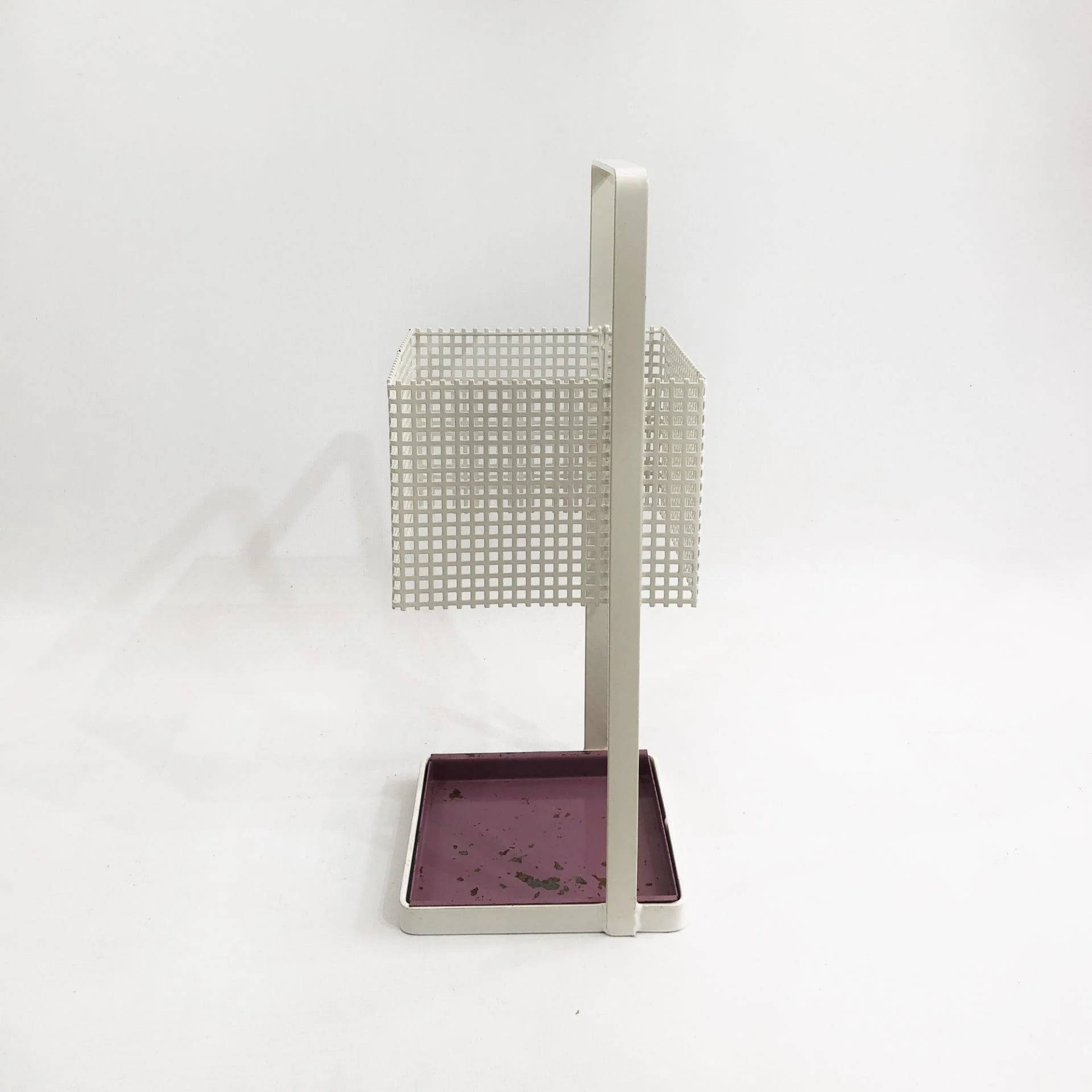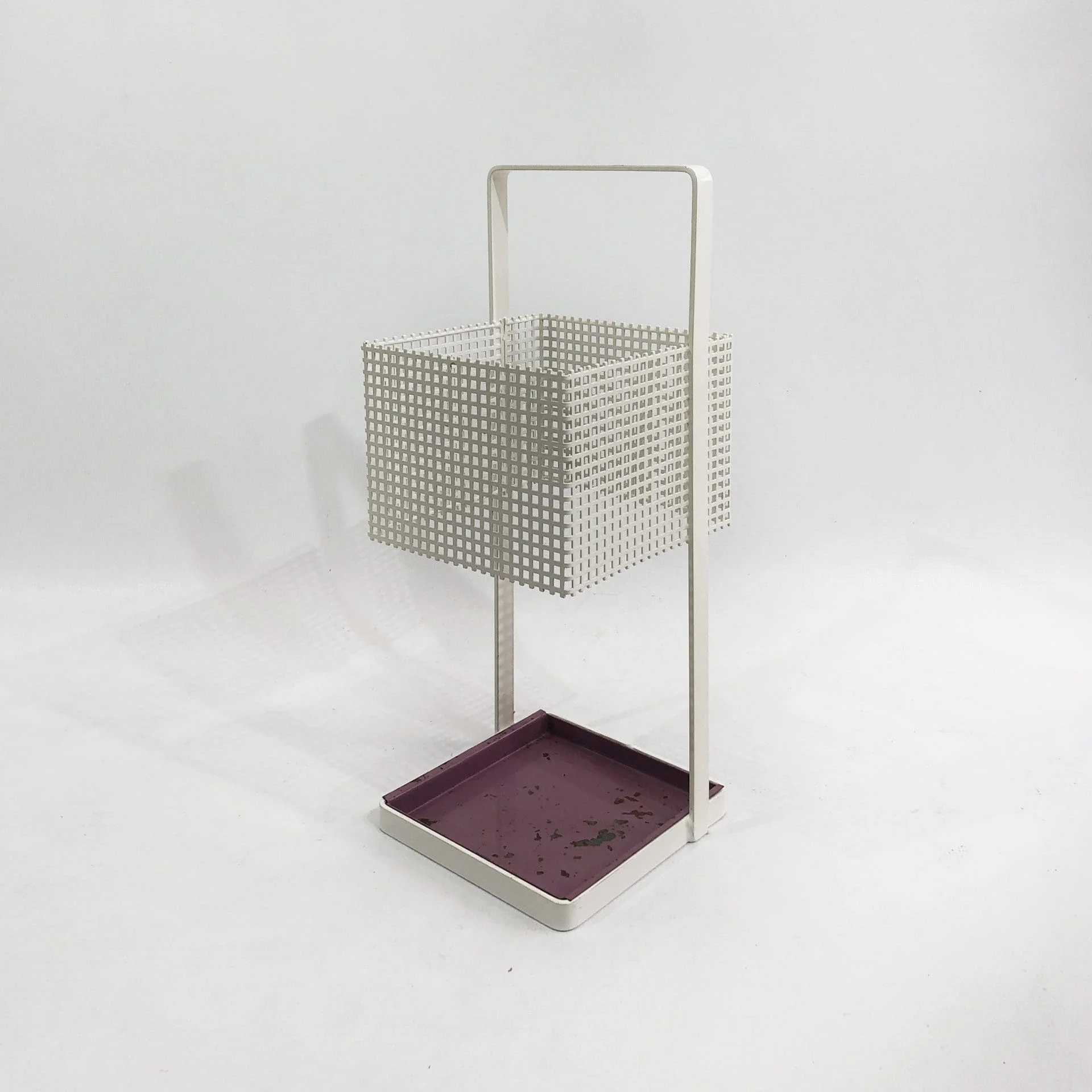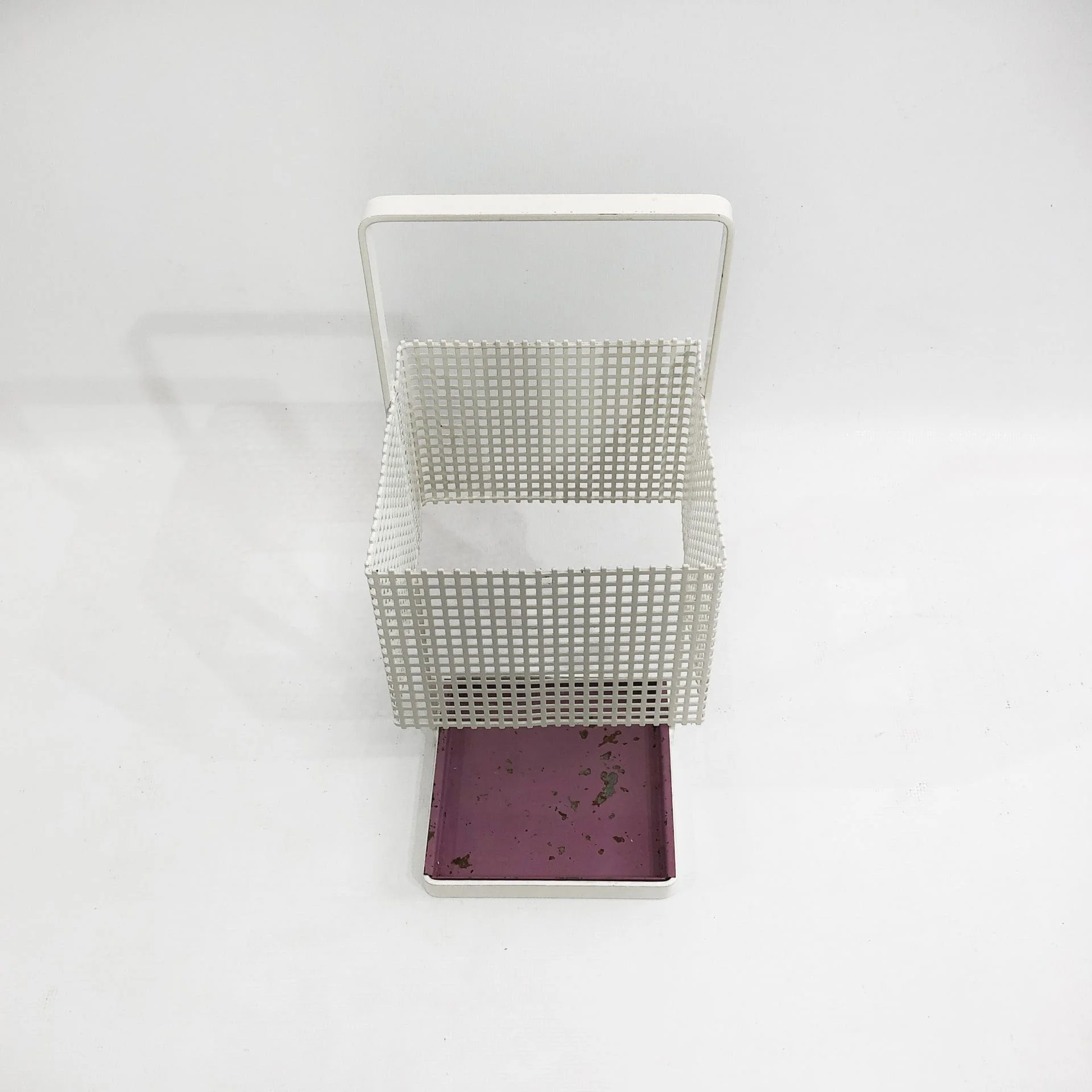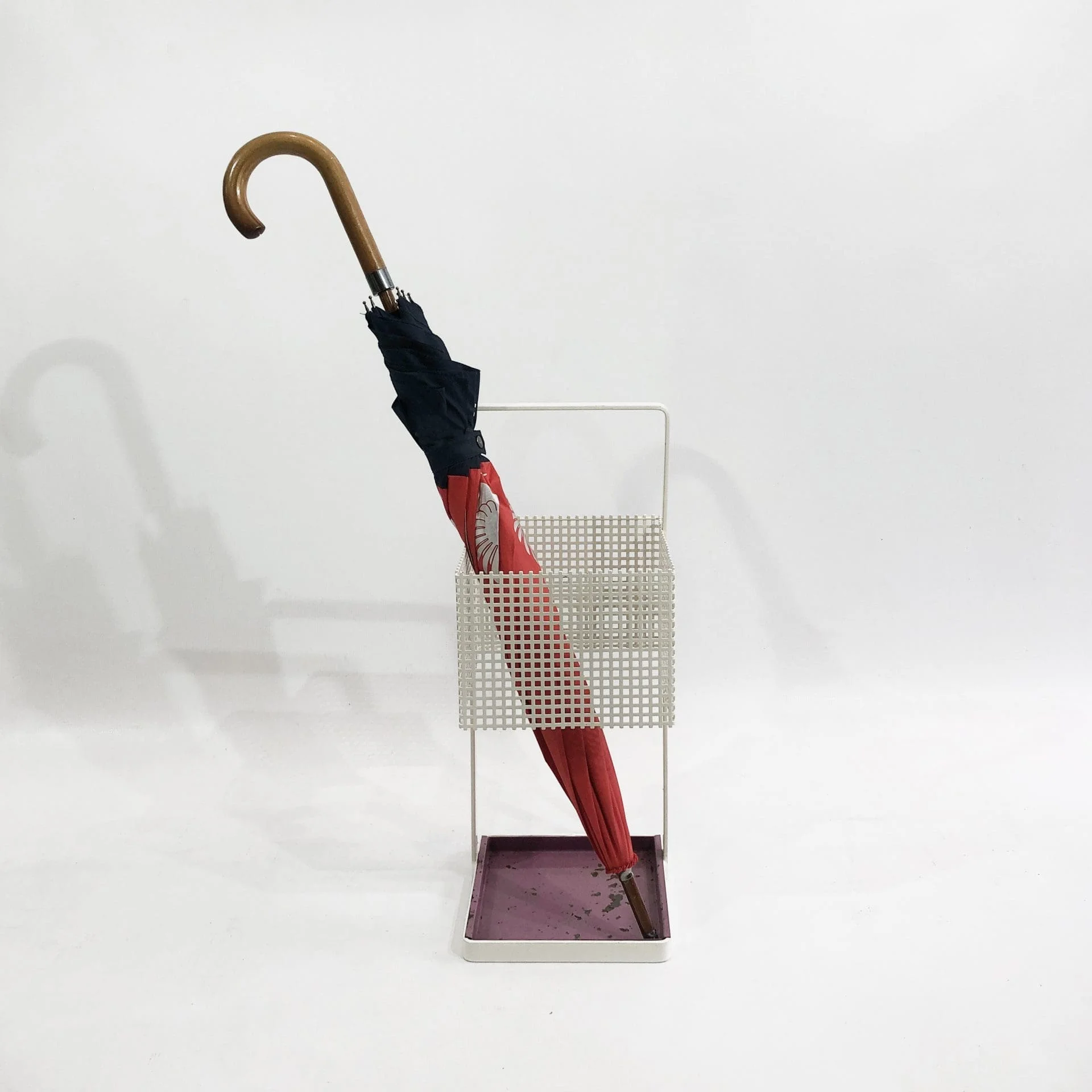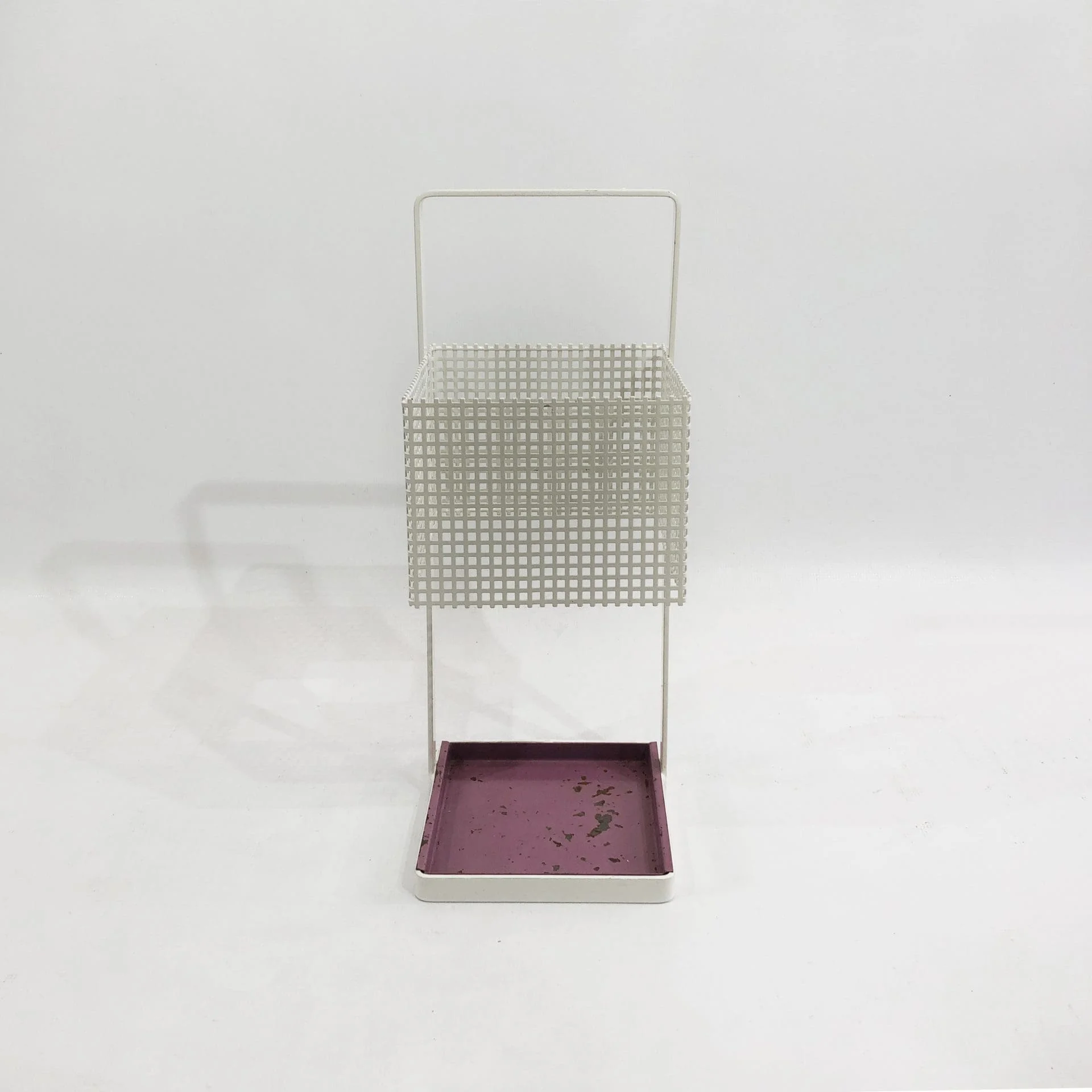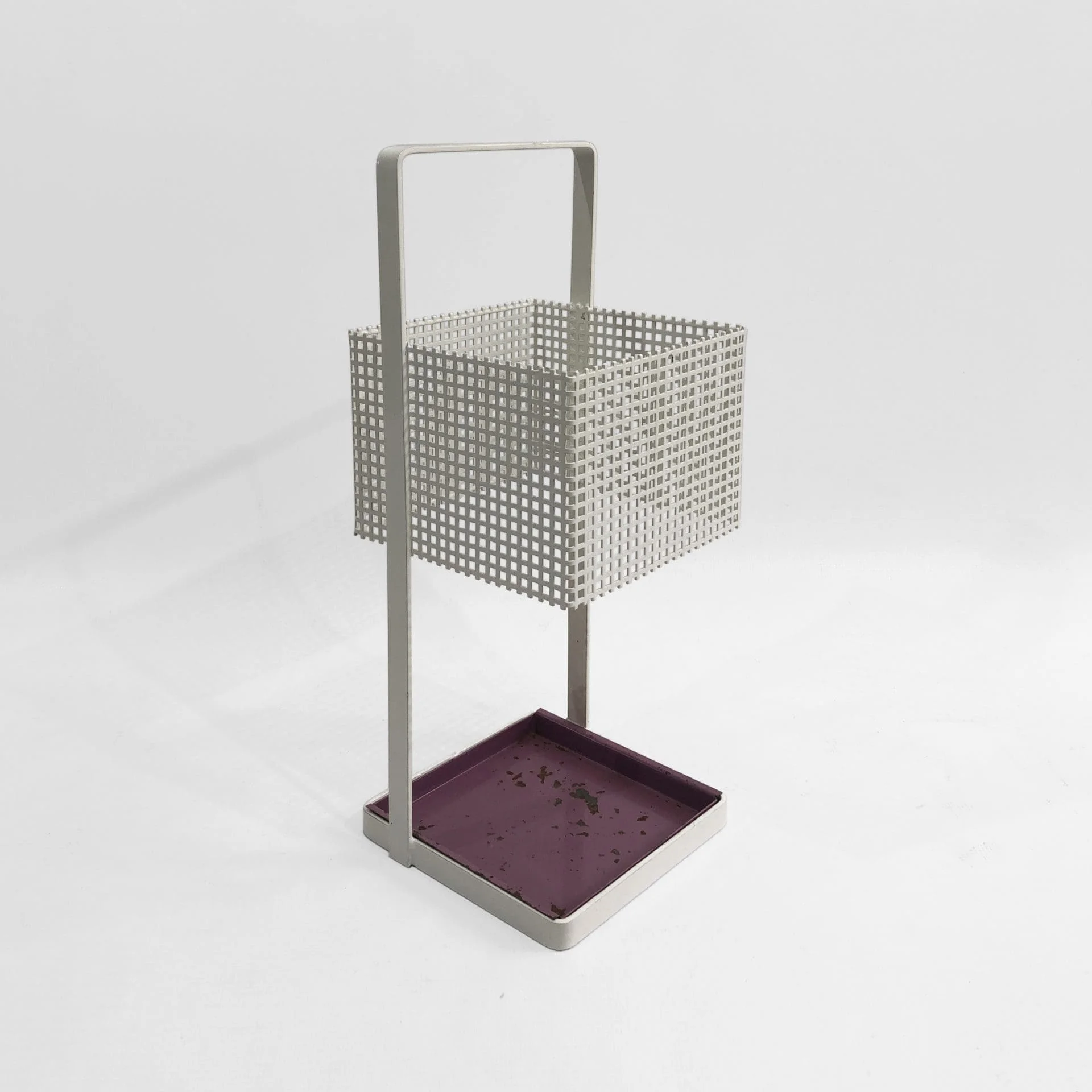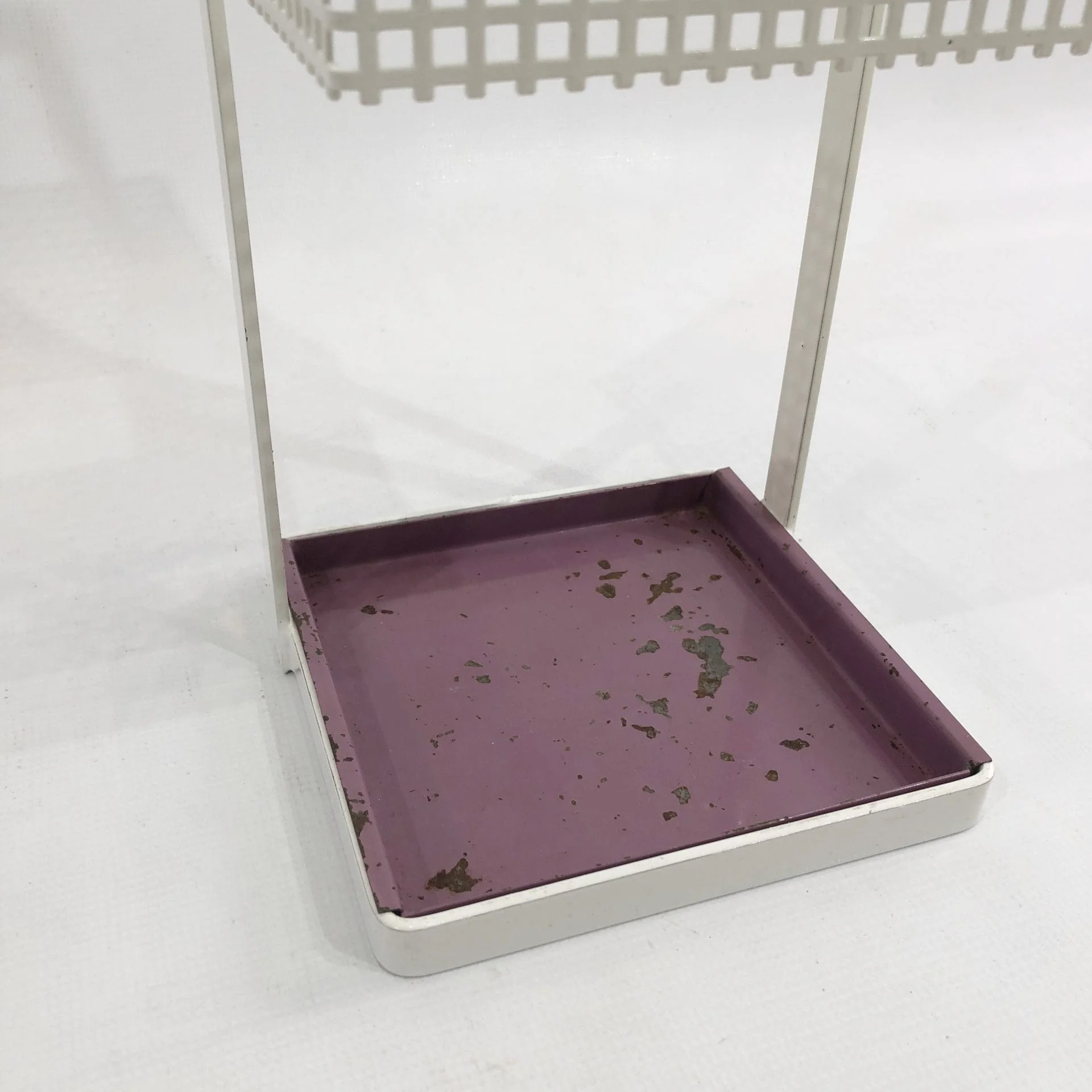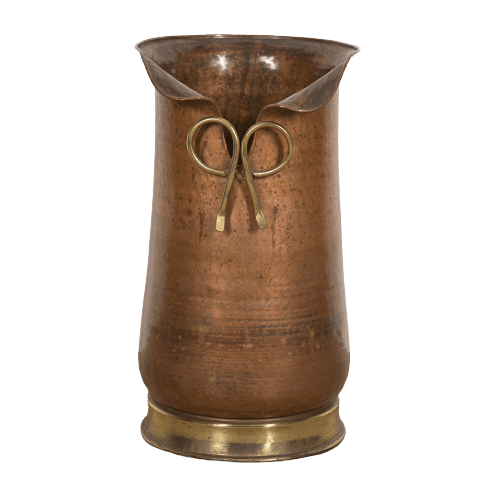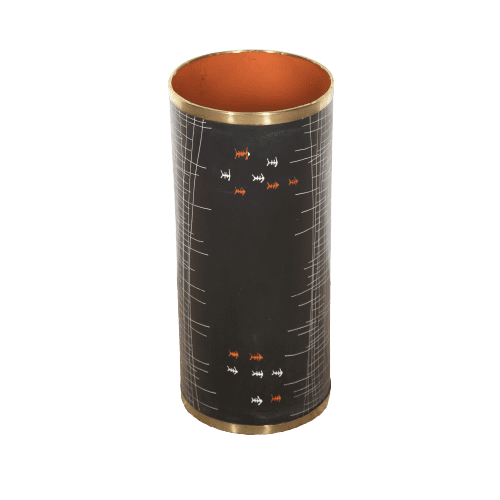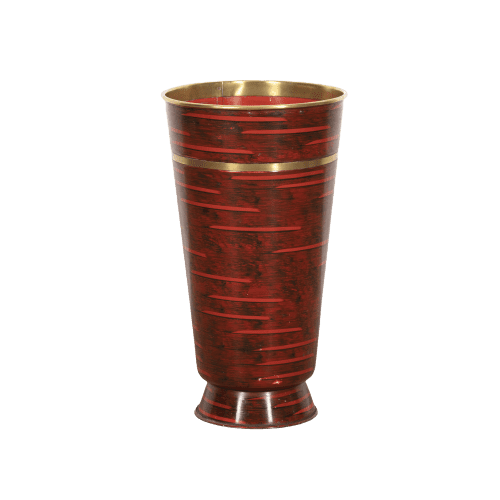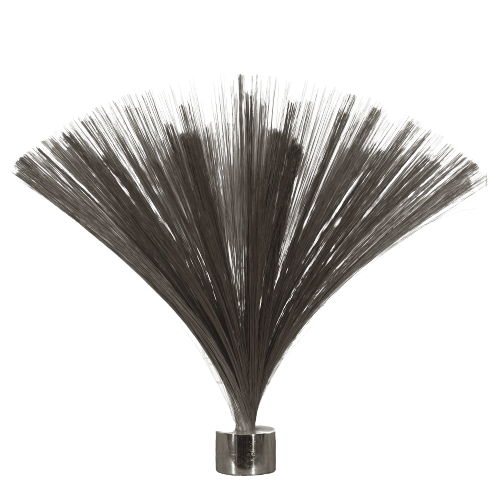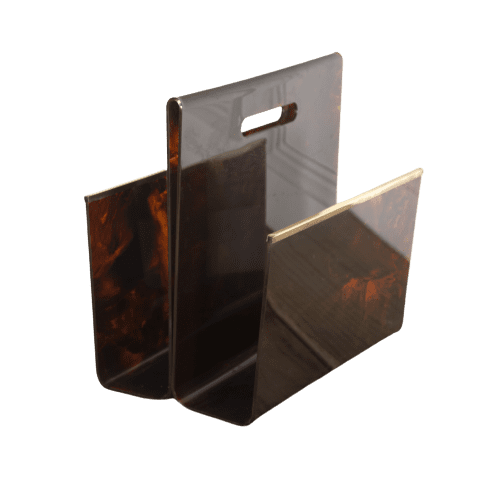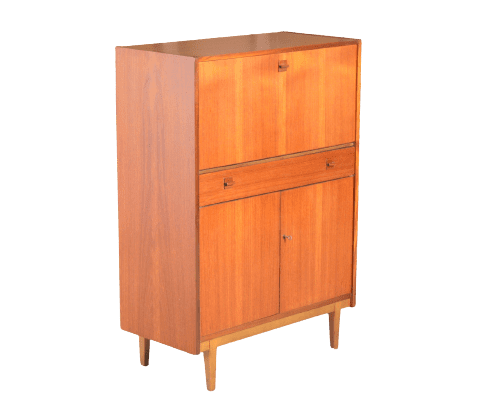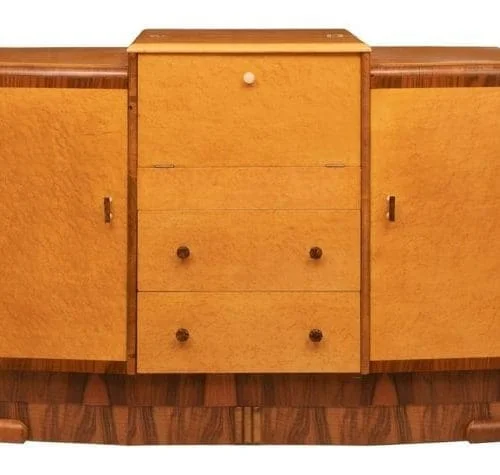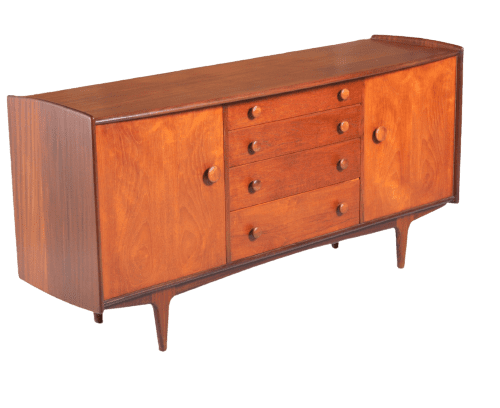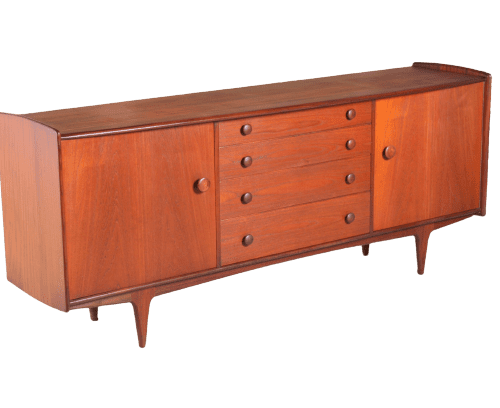About this product
This modernist square umbrella stand of white powder-coated metal is a rare design classic, from the renowned Josef Hoffmann for Bieffeplast. A square basket, with hundred of tiny square holes, is suspended from a white frame. At the base is a rich purple metal holder. This piece provides an crisp solution to umbrella storage, and is a must have for any design-conscious home.
Josef Hoffmann was born in the Czech Republic in 1870, and would go on to be influential in the field of design, despite training as an architect. He and his Wiener Werkstätte were at the forefront of a new way of design: one of simple and sleek geometric lines. His love of small squares even earned Hoffmann the nickname Quadratl Hoffmann, or “Square Hoffmann”. He would go on to influence design powerhouses such as Le Corbusier, Alvar Aalto, and Gio Ponti.
About
Josef Hoffmann (15 December 1870 – 7 May 1956) was an Austrian–Moravian architect and designer. He was among the founders of Vienna Secession and co-establisher of the Wiener Werkstätte. His most famous architectural work is the Stoclet Palace, in Brussels, (1905–1911) a pioneering work of Modern Architecture, Art Deco and peak of Vienna Secession architecture.
Early life and education
Hoffmann was born in Pirnitz / Brtnice, Moravia (now part of the Czech Republic), Austria-Hungary.[1] His father was modestly wealthy, the co-owner of a textile factory, and mayor of the small town. His father encouraged him to become a lawyer or a civil servant, and sent him to a prestigious upper school, but he was very unhappy there. He later described his school years as “a shame and a torture which poisoned my youth and left me with a feeling of inferiority which has lasted until this day.” [2]
In 1887 he transferred instead to the Higher School of Arts and Crafts State in Brno / Brünn beginning in 1887 where he received his baccalaureate in 1891. In 1892 he began his studies at the Academy of Fine Arts Vienna under Karl Freiherr von Hasenauer and Otto Wagner, two of the most prestigious architects of the period. There he also met another rising architect of the time, Joseph Maria Olbrich. In 1895, Hoffman, together with Olbrich, Koloman Moser and Carl Otto Czeschka and several others, founded a group called the Siebener Club, a forerunner of the future Vienna Secession. Under Wagner’s guidance, Hoffman’s graduation project, an updated Renaissance building, won the Prix de Rome and allowed Hoffmann to travel and study for a year in Italy. [2]
The Vienna Secession (1897–1905)
Upon his return from Italy in 1897, he joined Wagner’s architectural firm, and in the same year he joined the new movement launched by Wagner, Gustav Klimt, and others; the Society of Austrian Fine Artists, better known as the Vienna Secession.[3] He immediately went to work on the design of the Secession Building, the first gallery of the movement, designing the foyer and the office, and planning the first exhibitions in the building.[2]
He wrote his first manifesto for the Secession at this time, calling for buildings which were stripped of useless ornament. “It is not a matter of overlaying a framework with ridiculous ornament in molded cement, made industrially, nor imposing as a model Swiss architecture or houses with gables. It is a matter of creating a harmonious ensemble, of great simplicity, adapted to the individual… and which presents natural colors and a form made by the hand of an artist…” [2] In his writing, Hoffmann did not entirely reject historicism; he praised the model of the British Arts and Crafts Movement, and urged artists to renew local forms and traditions. He wrote that the basic elements of the new style were authenticity in the use of materials, unity of decor, and the choice of a style adapted to the site.[4]
In 1899, at the age of twenty-nine, he began to teach at the Kunstgewerbeschule, now University of Applied Arts Vienna. He designed the Vienna arts exhibition for the 1900 Paris Universal Exposition, which exposed the Secession style to an international audience. In 1899, he also designed the Eighth Exposition of the Secession, one of the most important exhibitions it, due to its international participants. In addition to works by Secession artists, it featured works by the French artist Jules Meier-Graefe, the Belgian Henry van de Velde, Charles Ashbee, and especially the works by the Scottish designers Charles Rennie Mackintosh and Margaret Macdonald Mackintosh from Glasgow. This exhibit included a group of model houses in the Hohe-Wart neighborhood of Vienna which displayed features of Arts-and-Crafts movement, including windows divided in small squares, and the gable roof. [5]
During this period, Hoffmann’s work became more rigorous, more geometric, and less ornamental. He favored the use of geometric forms, especially squares, and black and white surfaces, explaining later that “these forms, intelligible to everyone, had never appeared in previous styles”. [6] He was in charge of designing the frequent exhibits held in the Secession gallerias, including the setting for Gustav Klimt’s celebrated frieze devoted to Beethoven
